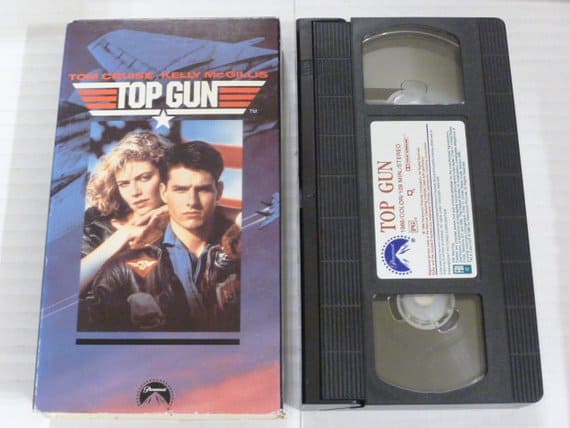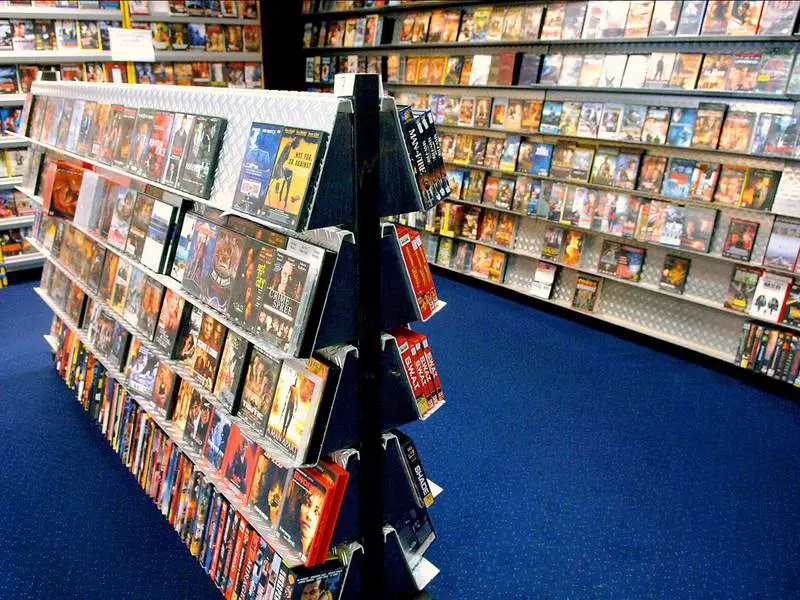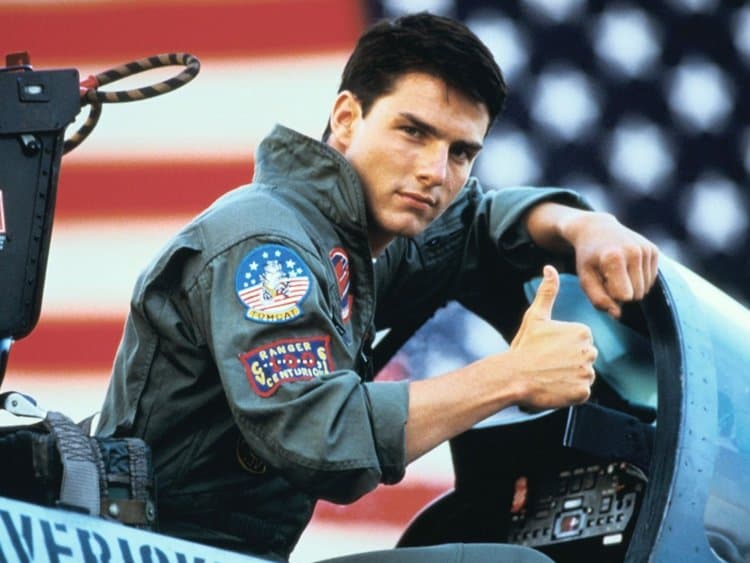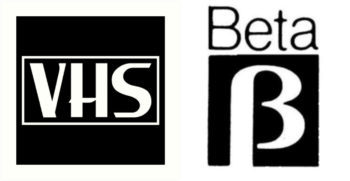
If you’re a younger person, you have no concept of what renting a physical movie is. You might not even really know of DVD and probably just stream everything. But at one time the home video market was the biggest thing going and it might not have happened without a certain Tom Cruise movie.
The Top Gun VHS would be released in 1986 and would change the home video market forever by lowering the cost of a home movie which were previously extremely expensive. They would introduce theirs at a much cheaper cost and use ads to offset the costs. This set the new standard for home video which is still used today.
Take my breath away.
This is a very interesting story that needs a shout out to the people at Cracked and their YouTube video that revealed this whole history.
Like I mentioned if you grew up in the 80s and 90s home video was where it was at. A video store on a Friday Night was where you wanted to be. It was the place to be seen and was the focal point of your weekend entertainment.
It was probably a Blockbuster but local video stores were just as big a part of the equation. If there was a big movie that came out in the theatres you would have to wait an excruciatingly long time until the home video release. This obviously doesn’t exist today and some movies are showing up on Netflix at the same time, or without, being in theatre.
But back in the 80s home video as we knew it almost didn’t end up being the case. It would take the release of a much loved Air Force movie to put the whole market in motion.
This is the story of how the Top Gun VHS led to the home video explosion of the 80s.
The Creation Of The VCR
If you want a full look at the creation of the VCR, you need to check out my blog all about it here. It covers the invention and the battle between VHS and BETA and how VHS ultimately won out. Here’s the quick rundown though.
The creation of the VCR goes back to the late 50s but it would be years before it would even be presented, and affordable, for the consumer market. Sony got the ball rolling in 1971 with a machine they would call the Sony U–Matic. Phillips would also release a video player that would be available for the consumer market around the same time. The difference is they would give it a name. They called it Video Cassette Recording.
Or, the VCR.
Sony would create the Betamax in 1975 and Phillips would create the Video Home System, or VHS, in 1977. This format war would lead into the 80s but the main thing was the VCR was now becoming a mainstay in peoples homes. By 1985 30% of households would own one.
Again, check out my full blog on the format wars but VHS would win out because it was made by more brands and became more affordable. Also, and this is probably the biggest thing, the VHS tapes had a longer recording time, and this is what people wanted.
So everyone is using a VCR to record their favorite episodes of Dallas but the home video market was still not really a thing yet.
The Early Home Video Market
The VCR was an amazing thing because you could capture live TV but also get to watch, or own, a movie that had “recently” been out in theatres. Before that you would have to wait years for it to hopefully be played on a major network.
Studios were release movies for home video in the late 70s but not only did they cost a fortune, the players needed to play them cost more than most people’s car. The original VCR’s sold for around $1200 which converted for today is $5500 smackeroos. Yowza.
So this is the late 70s and even by the mid 80s movies were still out of reach for most people. I don’t remember this, and probably explains why we didn’t really have any, but top movies in 1985/1986 were going for eighty friggin dollars. Converted for today that’s $180 PER VIDEO. Holy crapping hell.
The other big thing is the studios didn’t seem to have any interest in releasing movies on home video before this time. A big money maker for them was re-releases which had them put the movie back into theatres after a short break from its original run. This was huge because there weren’t a lot of entertainment options and more people were willing to check out something that was a huge hit.
Jaws is a good example of this because the hype had grown over time and people who missed it the first time around would jump all over the re-release. Disney is also notable for doing this by putting out their classics at various times.
The thought was the studios were going to lose a lot of money because of the home video and they set the prices super high to make up for what they wouldn’t make from the theatrical re-release. So it makes sense, but it really stifled the home video market going into the 80s. Some videos would be priced higher and the average would be between $80-$100 which is close to $200 today, or how much my monthly income has been.
Here Comes Home Video Rental

Remember, video rental hadn’t been a thing yet and the only way you could see a movie at home was by having to buy one at the outrageously crazy prices. The studios were using this to make up for all those lost ticket prices but home video would really stick it to them.
Video rental at first was seen to be something that was actually illegal. There weren’t big chains like Blockbuster right off the bat so it was smaller little independent video stores that would start doing it. The studios cried foul over this saying it was a copyright violation of some sort because it was considered a public screening and that was illegal.
The video stores combatted this by creating rental clubs and treat it similar to a country club. This is going way back but do you remember having to pay annual dues? Seems crazy, but this was their workaround to the problem. These fees weren’t always cheap, but they were also to offset the cost of buying this horrifically priced videos.
Then a movie in 1986 turned everything on its head.
Ride Into The Danger Zone
Top Gun came out in 1986 and is the story of elite fighter pilots at a weapons school where they all compete to be the best. They play a lot of shirtless volleyball and one of the students learns something from a civilian instructor that are not taught in the classroom 😉
Top Gun was a huge hit with an iconic soundtrack including “Danger Zone” by Kenny Loggins, “You’ve Lost That Lovin’ Feelin” by the Righteous Brothers, and “Take My Breath Away” by Berlin. The Top Gun Anthem was pretty epic as well with its deep electric guitar solos.
Top Gun had mixed reviews from critics but audiences ate it up with a spoon and a few weeks after it opened the number of theatres showing it increased by 45%. The movie was made for a pretty paltry $15 million which seems really low even for the mid 80s. It made back $356 million which converted for today is over $800 million. So it was a monster hit.
Top Gun starred Tom Cruise, Val Kilmer, and Tom Skerritt and was based on an article called “Top Guns” from an issue of California Magazine in 1983. The Navy made some actual F-14 fighters available for filming at the low cost of $7800 per hour, or $18,000 today. Yikes.
They also got to use the USS Enterprise Aircraft carrier for some shots and during one day of shooting the commander of the ship changed the course it was sailing which completely changed the lighting making filming almost impossible. They could get it back on course with the good lighting but it cost $25,000 to turn the ship. And director Tony Scott had to write a check on the spot to turn the ship to be able to shoot for 5 minutes.
(If you want to read about the greatest toy ever made check out my article on the GI Joe USS FLAGG)
Some other fun facts about Top Gun:
- It’s one of the best selling soundtracks of all time going 9x platinum
- Bryan Adams would have recorded songs for the movie but felt the film glorified war
- Toto was originally going to record “Danger Zone”
- Top Gun was nominated for 4 Oscars
- After Top Gun, naval recruiting went up 500%
- There is supposed to be a sequel coming out in 2020
Top Gun was the biggest movie of 1986 and then came the home video release and our story picks back up there…
Changing The Home Video Game

So I mentioned that big time movies were selling for $80-100 a copy but there was the odd time they would be a bit cheaper. The odd Indiana Jones and Beverly Hills Cop would sometimes sell for $40. Sounds cheaper but remember that’s the equivalent of $92 today.
Paramount turned everything on its head by selling Top Gun on VHS for $26.95. This was the lowest that any feature film had ever been sold for by far. But this wasn’t a mistake or poor planning.
If you owned Top Gun on VHS, you remember that the tape was front loaded with a Diet Pepsi commercial. This was Paramounts way of being able to not take a big hit on missed revenue from a re-release but making it more affordable who people who all clearly loved the movie. This had never been done before and one of the appeals of home video was that you didn’t have to watch commercials like you did on TV.
This was the tradeoff with the consumer; you get a cheaper movie but you have to sit through a commercial, or at least fast forward through it. Paramount was marketing this thing hard through an $8 million campaign and the deal with Pepsi would help alleviate some costs and the hit that studios usually took from
And it worked.
The advanced demand was so high that the pre-sales made it the highest selling video-cassette in the history of the whole industry. This was before it was even available in stores. People sure love Ray-bans and shirtless Val Kilmer…
Capitalizing On Success
This whole campaign was obviously a huge hit and made everyone involved in movies raise their eyebrows. This worked well for Pepsi too and they would then approach Steven Spielberg (is there any point in even writing Steven? I can just put Spielberg at this point right?).
E.T was still the highest grossing movie of all time even though it came out in 1982. (it would actually stay number one for 11 years until it was dethroned by Jurassic Park). Anyhoo, it had never come out on VHS because they wanted to just keep putting it out in theatres every couple of years from now until eternity, even though the E.T Atari video game had destroyed an entire industry…
Pepsi made them an offer they couldn’t refuse and convinced them to put E.T out on home video (with their commercial in it of course). They threw a lot of money at Spielberg and pushed for a $24.95 price point AND included a $5 rebate from Pepsi that would bring the movie down to $19.99.
Or roughly what we pay for movies today…
The other big thing is that Pepsi now owned Spielberg, and E.T’s, soul and could start using him in commercials. E.T, not Spielberg…
Don’t Forget About Us
At this point Coca-Cola’s lizard brain fired up and wanted a slice of the sweet sweet pie. They would get on board with movies like Indiana Jones and the Last Crusade, and Batman by “sponsoring” the video with Diet Coke commercials to make it more affordable. You just had to sit through commercials.
Teenage Mutant Ninja Turtles would follow this same formula by partnering with the very on brand Pizza Hut to offset the cost of their video release. I owned all these movies but don’t remember the commercials specifically except for the Diet Coke one in Batman.
Rental prices would vary over the coming years with new releases always being higher but this would end up replacing the money the studios would make on re-releasing the movie in theatres. So these days, unless you want to wait for a movie to come to Netflix, the streaming rental prices, or physical video rental price, can vary quite a bit still.
But the price to buy a movie still is around that $20-25 mark which was set all the way back in 1987.
Wrapping It Up

Well that was one pretty good yarn. It’s interesting how the whole video market evolved and that, as usual, marketing and corporate interests paved the way for how the industry would act. These days if you watch a physical movie you are stuck sitting through previews for other releases by the studio, along with some ads.
Honestly, try to skip past those, it’s friggin impossible. I love Blu-ray still as I think it’s the best form of a movie you can watch but the locked in previews make them so frustrating to watch. It can take 5-10 minutes before you are actually starting the movie when you factor in load up time plus the other crap they make you sit through.
This is one of the other appeals of streaming but I wonder how long until this completely takes over that format. It’s happening with Amazon Prime video but you can at least skip through the promos.
One interesting throwback fact is that Laserdisc prevented this locked in feature so studios couldn’t force you to watch anything you didn’t want to. Check out my whole blog on the interesting story of Laserdisc.
But that’s the story of how the Top Gun VHS changed the course of home video forever. Thank you Goose and Maverick.



